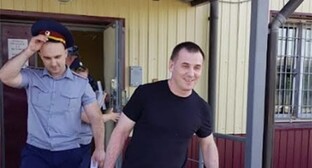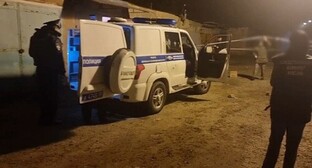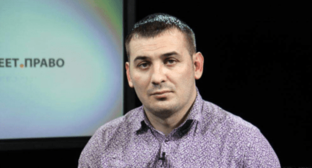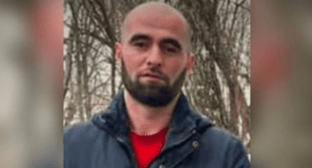18 April 2004, 21:48
Saying 'two,' meaning 'party'
Yuzhnyi Kavkaz, a regional analysis journal, N8, December 2003
The scenario of party institutions development in sovereign Armenia provides a lot of parallels with the logic of development of similar processes in other new independent states. Initiated by Gorbachev's reforms, centrifugal vectors going from the Kremlin powerfully enlivened and actually legalized "in the provinces" public life organization forms that had been hidden before. Grown on the ground of contradictions accumulated by that moment, parties first and foremost provided an alternative to the established political system, which was enough to make them self-sufficient. Each newly-established structure, regardless even of the ideology it preached, was viewed in the context of new, liberal ideas that overwhelmed the entire Soviet Union, and it was really democratic at least in form, if not in content.
Unlike many republics in the European part of the agonizing USSR where prototypes of civil liberties imposed "from above" were expressed in the form of declared economic (transition to market economy) and partly political (self-determination and withdrawal from the USSR) demands, democratic adjustments in Armenia were mostly manifested in an unprecedented upsurge of the national movement that was not originally aimed at the republic's withdrawal from the Union, but at the reunion of the two Armenian legal formations - the Nagorno-Karabakh Autonomous Region (NKAR) and the Armenian Soviet Socialist Republic (SSR) - within the existing state. These specifics are what gave birth in November 1989 to the Armenian Nationwide Movement (ANM) Party based on the Karabakh Committee. At first, this political organization was not guided by a clearly expressed economic platform and was "not leftist" just because it opposed the Communists.
It saw its most important task in ensuring the reunion of the NKAR with Armenia. This fact actually to a great extent explains the indisputable victory the ANM gained over the Communist Party of Armenia in the parliamentary election on May 20, 1990. "This election turned out to be a fight, in the classical meaning of the word, inside a bipartite system: the Communist Party on the one hand, still keeping some spheres of influence, and the ANM on the other hand, enjoying support of the overwhelming majority of the population," says Gevork Pogosian, director of the Philosophy and Law Institute at Armenia's National Academy of Sciences (Armenian Society in Transformation, Yerevan, 2003). It is of interest the 1990 election was direct (majority representation). Somewhat in advance, let's note a number of Armenian analysts believe the position of solely political figures would be deplorable if a vote using this system occurred nowadays. "Even a large-caliber politician presently has nothing to oppose to a mediocre businessperson in a direct vote in the constituencies," analysts say. And it is difficult to disagree with this statement.
There is another typical attribute of the "Armenian party field" that should be noted: the declaration of independence led to reappearance of traditional national parties in Armenia that de facto had operated abroad for more than 70 years: the Armenian Revolutionary Federation Dashnaktsutiun (ARFD), founded in Tiflis, Georgia, in 1890; the Ramkavar-Azatakan Party of Armenia (RAPA), founded in Constantinople, Turkey, in 1921; and the Social Democrat Hunchakian Party, founded in Geneva, Switzerland. Set up back in the Soviet time, the Association National Self-determination (ANS), founded in 1966 and officially registered in 1987; and the Republican Party of Armenia (RPA), founded in 1966 and registered in 1991, also legalized their activities in Armenia by the early 1990s. Aside from the mentioned organizations, there were some other structures operating in Armenia in the stated period: the Union Constitutional Law, founded in 1989 and registered in 1998; the National Democratic Union (NDU) that separated from the ANM in 1991; the Democratic Party of Armenia (DPA) that separated from a communist environment in the same year; the Communist Party of Armenia (CPA); and a number of undistinguished left-wing factions. This is what the republic's party system basically was at the very beginning of the 1990s.
Fifty parties are registered with Armenia's Justice Ministry presently. Meanwhile, their number exceeded 110 last year, the overwhelming majority being microscopic. Considering the nation's demographic aspects (the population of 3 million plus) and the fact that no more than three ideological trends exist in Armenia in reality, such statistics give evidence that the perception of the very destination of party institutions is distorted in the Armenian political environment. It is also a symptom in this light that President Robert Kocharian of Armenia has no membership of a party. In spite that the head of state sympathizes with the socialist ARFD, he personally adheres to rightist attitudes and rests rather on market tycoons in his policies. Meanwhile, the latter extremely seldom manifest a wish to join some or other party, and they hold seats in Armenia's parliament that they gained by a direct vote in the constituencies. It is of interest in this light that many representatives of the new Armenian bourgeoisie, that seems to have emerged already, have many more workers at their businesses than an average Armenian party has members. Thus, Armenia's most numerous political organizations People's Party and Orinats Yerkir ("Land of Lawfulness") number no more than 40,000 members each.
By the way, it is also typical for many other new independent states to have an excessive number of political organizations. Thus, Gevork Pogosian says there were 40 parties in Kyrgyzstan in the 1990s, 28 in Estonia in 1998, and 110 in Slovakia in 2001. Fifty-four parties took part in the 2001 parliamentary election in Bulgaria. One hundred and forty-five political organizations were registered in Georgia in 2001. So there are really a lot of examples. Turkmenistan is probably the only exception where the only Democratic Party of Turkmenistan is officially registered, headed by President Niyazov.
The period between 1988 and 1994 should apparently be considered the Golden Age of party institutions development in the new Armenia. This is approximately the time of operation of the last Armenian Supreme Soviet in the USSR (1990-1995) or the first (chronologically) National Assembly of the Republic of Armenia. This period was characterized by the dominating existence of exclusively political forces in the nation's legislature, each having a style and manner of its own. The "romanticism" of Armenia's last Soviet parliament was akin to the "romanticism" of the Supreme Soviet of the USSR in the perestroika era. Elections to that legislature (probably, because of general liberal tendencies and the absence of a distinct orientation on the part of the executive by that moment) set a democratic development standard unsurpassed in Armenia to date. Above all, the rude and apolitical element was not employed in them to the extent sufficient to predetermine voting results. Moreover, the February 26, 1991, law "On public and political organizations" practically launched the multi-party system in the republic.
The situation with parties changed drastically by the mid-1990s. The ruling party, ANM, that had split in two by the moment (some ANM activists headed by Vazgen Manukian founded an opposition party in 1991 called the National Democratic Union) and manifested itself not as much a national as a "right-wing" party, made it quite clear it was going to "privatize" all government in the country. On the threshold of the 1995 elections, the ANM leader, President Levon Ter-Petrosian of Armenia, banned one of the most influential political organizations in Armenia, the ARFD, and shut down over 10 print media outlets directly or indirectly linked with that party.
The ruling party (ANM) first utilized apolitical administrative and criminal resources in the 1995 parliamentary elections, which exerted direct influence on voting results. Once tested, the brute-force method of solving problems will in the future become a sort of tradition that will find its most complete and as dramatic expression in Armenia's National Assembly on October 27, 1999 (killing the chairman of the National Assembly, the prime minister and some other ranking officials). Civilized political forms of settlement of inner contradictions were no longer in demand, which most seriously struck on party institutions. Remarkably, kinetic "vehicles" of brute-force methods, carrying out their sponsors' will and putting the fear of God into polling stations in 1995, did not shrink from running for the national parliament on their own in the next election. And they were quite a success.
Thus, 1995 became crucial for parties. Losing the ability to conduct political struggle, they actually were replaced by accidental personalities and... parties, numerous like mushrooms after rain or promises before elections. For example, 17 new parties at once emerged right before the 1995 elections from nowhere. It should be noted for comparison that only eight parties had emerged in Armenia in 1992 and only four in 1993. The same happened again in 1999 when 28 new parties appeared.
Establishment of an election Union in 1996 was the last attempt to revive the institution of political organizations, but it was dispersed during the presidential election, some activists beaten right in the parliament and some others forced to "go into hiding" for an indefinite time. The law "On political parties" came into effect in Armenia on August 7, 2002, that demands meeting a number of requirements to set up a political party. In particular, a party must have at least 200 members and offices at least in three of Armenia's ten regions, including Yerevan. The fact that the number of political organizations in Armenia more than halved after a new registration in November 2003 once again gives evidence of a qualitative change of the situation in this area. After all, a party is one of those public and political structures in which the quantitative element determines the quality to a great extent. As for the total number of all Armenian party members, it is presently hardly comparable with the number of Armenian communists, for example, in the mid-1980s (0.18 million). Meanwhile, the number of parties in Armenia was constantly growing right up to the repeat registration, which is confirmed by the this chronology: 20 parties in 1991, 28 in 1992, 32 in 1993, 42 in 1994, 49 in 1995, 53 in 1996, 60 in 1997, 77 in 1998, 88 in 1999, 97 in 2000, 104 in 2001, 114 in 2002, 50 in 2003.
In early March 1998, a government helicopter employed in the presidential campaign performed frequent flights to the most distant districts of Armenia. Prime Minister Robert Kocharian, one of the key contenders and acting president, was as a rule attended on board the helicopter by members of his team representing party institutions. So in spite that the candidate for president himself had no membership of any of the organizations supporting him, the fact that an impressive number of solely political structures of a respectable quality (in that period, at least) took part in the election campaign testified to attempts to restore the efficiency of parties that had noticeably dropped by that moment. The future president received support from parties that were by no means new: the Union Constitutional Law, the ANS functioning within the Republican Party Movement of Armenian Militiamen of Erkrap, the DPA, the RAPA, and the ARFD that had restored its legitimacy (by a special decree of Robert Kocharian).
Just one person, actually, Karen Demirchian, the former first secretary of the Central Committee of the Communist Party of the Armenian SSR, ran as the main opponent of this chiefly political force in the extraordinary presidential election in 1998. Unlike the above-mentioned parties, he had no political experience and he ran rather as a certain public figure which a huge number of voters associated with everything that had existed before the break-up of the USSR minus faults of the stagnant totalitarian regime.
Thus, the 1998 presidential election was above all destined to demonstrate the trend in the development of public and political sentiments dominating in Armenia by the moment and actually outline the key vector of civil orientation for the near future: what institution will the people choose? Will it be the institution of party organization of political life or the personal factor? Six years ago this question was resolved in favor of party institutions, but only in the second round. Karen Demirchian's voters were guided in their choice by instinctive rather than pragmatic considerations, so they proved capable to resist the quite powerful administrative and propaganda resources employed in the election campaign. Reiterated by members of Robert Kocharian's team, the warning that the coming to power of Eduard Shevardnadze and Heydar Aliyev in Georgia and Azerbaijan, who actually were Demirchian's "socialist camp" counterparts, had not ensured, to put it mildly, the "desired Soviet level of nationwide welfare" only annoyed the voters. Trust in Demirchian was not diminished even by the well-known statement of Armenia's Defense Minister Vazgen Sarkisian who said, "Karen Demirchian has no moral right to aspire to a senior post in the country, less so aim at the post of president because he has not taken part in either the political or socio-economic or defense life of the state during 10 years of Armenia's independence."
In less than one year, Vazgen Sarkisian will become the closest associate of Karen Demirchian whom he had criticized. Together, they will shape an election bloc called Unity and gain an indisputable victory in the 1999 parliamentary election. However, against the backdrop of universal euphoria and the actual awakening in masses of a faith in better prospects, this artificial tandem will be justly interpreted in the context of general confusion in the party quarters that filled Armenia's political atmosphere. This will happen later, though. Meanwhile, the extremely difficult victory Robert Kocharian and his team gained in the presidential election nevertheless left an ambiguous sensation. On the one hand, the original aim was reached - the prime minister became president, and members of his election headquarters got senior posts. It was specially marked that political personalities finally assumed offices in the presidential administration: DPA leader Aram G. Sarkisian became the new president's foreign policy adviser; ARFD Supreme Body chief Vaan Ovannesian became national security adviser; Hamlet Karapetian from the RAPA was appointed information policy adviser; and Union Constitutional Law chairman Grant Khachatrian headed the Presidential Civil Council on Constitutional Amendments. ANS leader Paruir Airikian was appointed chairman of the Presidential Human Rights Commission. Another Erkrap leader, Albert Bazeian, occupied the post of Yerevan mayor. Never before Armenia's government had represented a political (party) variety like that.
At the same time, however, the republican authorities were obviously not able to prevent the tendency of mass distrust in parties as institutions with a political function, growing in the public consciousness. The vector of orientation toward a single, individual "messiah" that was so clearly expressed in 1998 became even clearer after the election, especially in the period when apolitical figures such as Stepan Demirchian and Aram Z. Sarkisian emerged on the republican political arena. The messiah factor was also present in relations between voters and Artashes Gegamian, leader of the National Unity Party, whose tactics were fully in line with the "momentary expectation of a social miracle" accumulated with a certain part of the population. Gegamian will never forgive Demirchian and Sarkisian, inexperienced in this trade, their "privatization" of his tactics.
The presidential election in February-March 2003 provided evidence it was the personal perception of current political processes that was quite strong and even well-established. In spite that Robert Kocharian, running for a second term, had no powerful opponent like Karen Demirchian, the vote did not get by without a second round. This time, not a political, nor even a public figure was his main rival: Stepan Demirchian's only trump card was that he was the son of a legendary father.
The 2003 presidential election thus showed obvious regress of party institutions. The overwhelming majority of political organizations that had previously unconditionally supported Robert Kocharian abandoned the active president and build up a radical opposition camp - a circumstance that, by the way, might be considered quite normal but for one nuance. Unlike the 1996 election bloc when the opposition nominated Vazgen Manukian as their common candidate, who was an entirely political figure (a member of the Karabakh Committee, an ANM leader and the chief ideologist of this party, a former prime minister and a former defense minister, leader of the National Democratic Union that separated from the ANM in 1991), no such thing was to be seen, to put it mildly, in the most recent presidential election. This time, the undisputed leaders of the opposition, Stepan Demirchian and Aram Z. Sarkisian, were really unprepared for big politics (unlike, for instance, George Bush the junior or Ilham Aliyev), and their "political capital" was accumulated in an hour on the simple ground that the former was the son and the latter the brother of eminent state figures. But what is more important in the context of the treated subject is that the opposition parties (in particular) and their leaders (Vazgen Manukian, Grant Khachatrian, Aram G. Sarkisian, Albert Bazeian, etc.) thought it advisable to admit and eventually to accept the new rules provoked by an accident and thus dealt another blow to emergent party traditions. The following is also remarkable in this respect: politicians adopted and mastered rules they had previously not only rejected for considerations of principle, but also subjected to merciful ridicule. In this case, it is all about a dynastic approach to government and policy-making instead of ideological continuity. To ensure seats in the National Assembly (politics are the art of the possible), party leaders actually turned into heralds of apolitical figures in the past 2003 presidential and parliamentary elections. The position of Vazgen Manukian, one of the most scrupulous and consistent Armenian politicians, was especially surprising, if not shocking. Joining none of the rival camps and running independently in the 1998 presidential election, he managed to preserve not only his political style, but, most important, an electoral base of his own, not too great but very stable. However, it seems no longer possible presently to state that Vazgen Manukian has managed to retain his electoral base again. Less so, that the NDU he headed split into three tiny organizations just before the election, which was hardly for considerations of ideology (during the vote each of the leaders of the split factions - Shavarsh Kocharian, Arshak Sadoian and Vazgen Manukian himself - found their shared political shelter under Stepan Demirchian's wing).
Thus, Robert Kocharian's first five years in office (1998-2003) chronologically marked the period of progressive weakening of party institutions in Armenia's political structure, along with new, chiefly accidental people and political formations emerging on this arena. The president never "brought up" a genuinely political and - in this context - worthy figure as an alternative candidate for the main post in the state, and this should probably be admitted one of his most important home policy errors.
As for the pro-presidential political organizations, they are also in crisis. Shaping a coalition government after the past parliamentary election, these three - the ARFD, the RPA and Orinats Yerkir - enjoyed support of less than 25% of the total number of voters registered (2,317,945). A total of 559,157 voters chose the "triumvirate," which makes 45% of the vote (curiously, the "triumvirate's" electorate is comparable in number with Stepan Demirchian's electorate in the presidential election in the same year 2003 and almost half the same figure for Robert Kocharian who has no party membership - 1,044,424). Considering the powerful administrative leverage employed in the provinces, this outcome can hardly be viewed as an unconditional, non-suggestive victory.
Ten various election campaigns have been conducted in Armenia for 10 years plus of its sovereign development. Allowing for material and moral and mental spending on them, they have but exerted a negative influence on the attitude of ordinary voters to party institutions as a whole. On average, every year of Armenian independence was at the same time a year of election, after election and before election. People are obviously tired and thirsty for stable development. It seems the active president's political planning is based exactly on the understanding of this fact. Nevertheless, another loss of positions in the nation's home policy life on the part of political and party structures harbors objective danger at least to the effect that many very important matters of state in Armenia may continue to be solved by methods that are by no means political.
December 2003




